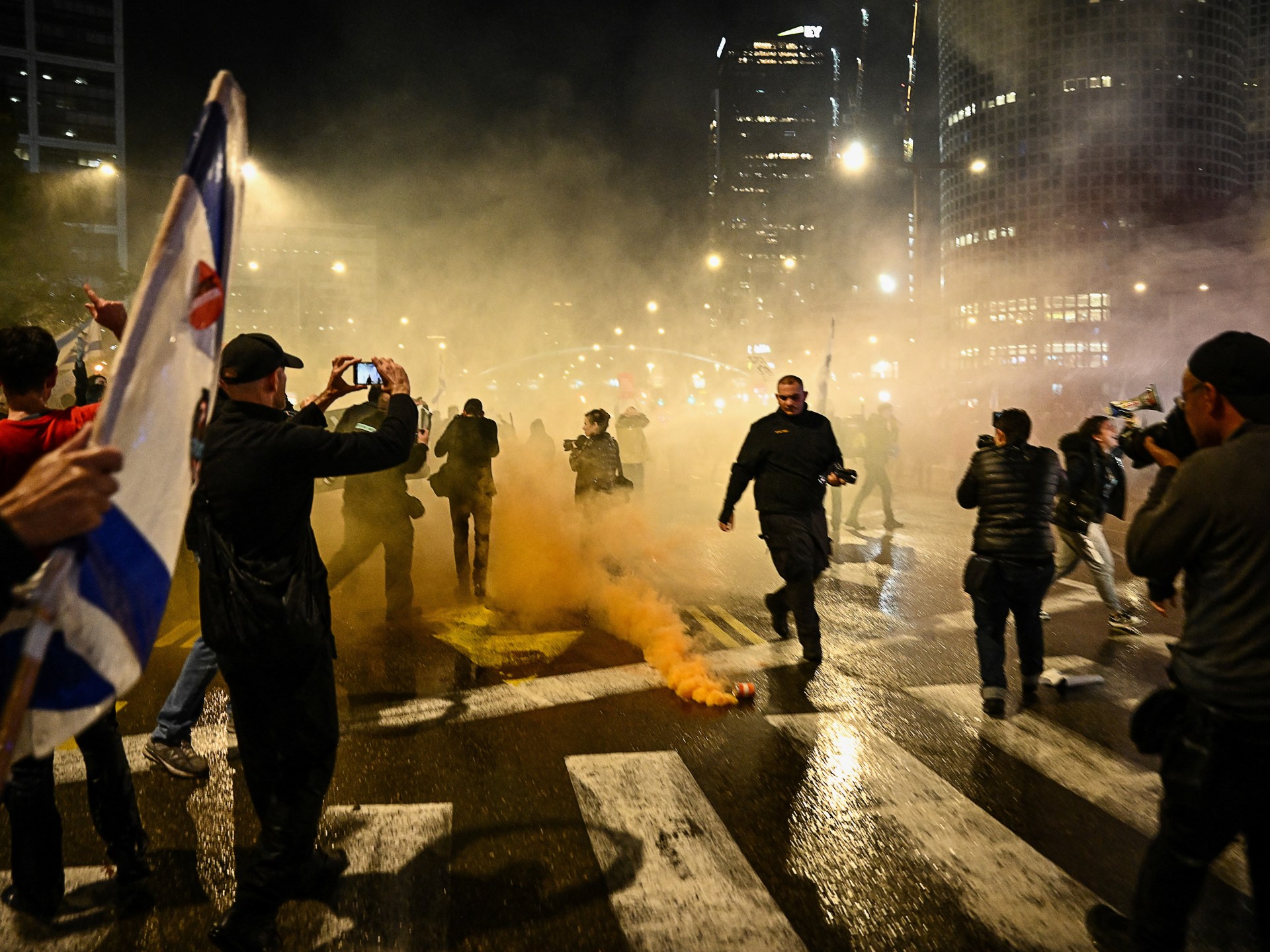The long road to the Rafah crossing and out of Gaza
“Hamas refused to cooperate today,” a U.S. official familiar with the situation said, expressing measured optimism that things would be “back to normal tomorrow.”
But what passes for normal in the ongoing war between Israel and Hamas is anything but, as fleeting deals for the evacuation of foreign nationals have been made, misunderstood and broken among participants and involved bystanders with vastly different agendas — some of whom communicate only through intermediaries or for politically convenient public consumption.
“There is no one place where everyone is sitting around a table,” said one diplomat familiar with the situation and who, like others interviewed, spoke on the condition of anonymity to discuss sensitive negotiations. “It’s just a lot of back and forth among people in different locations, and it leads to a lot of confusion.”
After a hard-won agreement finally allowed trucks carrying humanitarian relief to trickle into Gaza from Egypt two weeks ago, attention then focused on the thousands of foreign passport holders — most of them Palestinian nationals with dual citizenship — who were stuck inside when borders closed after Hamas’s brutal Oct. 7 attack on Israel.
“We’ve been working on that for these last two and a half weeks, day and night,” David Satterfield, President Biden’s special envoy to the humanitarian situation, told reporters Saturday before news of the day’s shutdown spread. “We’re very pleased that arrangements were reached and are being implemented now and will be continuing for a number of days ahead.”
U.S. officials said Saturday they were still accounting for how many American citizens have been able to leave so far.
“How long will this go on? When will everybody be out?” Satterfield said. “The answer is they’ll be out when they’re out.”
In the early days of the crisis, as optimistic U.S. diplomats messaged American citizens in Gaza to head south toward the Rafah crossing, many were stopped at Hamas checkpoints before reaching the locked gate. Asked for documentation they didn’t know they needed and had little way to obtain, they were turned back.
As time went on and the potential evacuees huddled with little food, water or electricity in shelters across southern Gaza, more roadblocks appeared from all sides, according to officials and diplomats from a variety of involved countries.
Hungry and weary, foreign nationals have been trapped in the crossfire, fearing Hamas’s stated desire to keep Gazans from moving south and an unrelenting barrage of Israeli airstrikes, which left craters in the asphalt and damaged buildings on the Gaza side of the crossing and nearby towns.
Egypt, diplomats said, refused to open its side of the Rafah border crossing either for humanitarian assistance of refugee egress until the attacks stopped.
Egypt had additional concerns, which were repeatedly raised during weeks of painful negotiations. In 2008, during one of the many previous clashes between Hamas and Israel, militants blew up part of the border wall with Egypt to protest an Israeli blockade of the enclave that continues to this day. Thousands flooded through the hole, racing to Egyptian towns to obtain goods scarce inside Gaza.
Most eventually returned home with full shopping bags, but the memory remains vivid in Cairo, where the government hates Hamas, an offshoot of the Muslim Brotherhood, which shortly held elected power in Egypt before its government was overthrown in 2013 by then-general and now-president, Abdel Fatah El-Sisi.
Sisi has blanched at suggestions that Gazans should find a new home in the vast desert expanse of the Sinai Peninsula.
“Egypt has reaffirmed, and is reiterating, its vehement rejection of the forced displacement of the Palestinians and their transfer to Egyptian lands in Sinai,” Sisi told a peace summit in Cairo on Oct. 21. The United States has also been adamant that any Palestinians — 700,000 of whom were displaced from Palestine following Israel’s creation in 1948 — who flee Gaza now have a right to return to their homes there.
The summit coincided with the first indications that, if agreement could not yet be reached on getting out of Gaza, there might be a settlement on getting things in. Biden raised the issue of the airstrikes in southern Gaza — an area Israel had declared a “safe zone” — during his lightning visit to Tel Aviv on Oct. 18. On the flight home, he called Sisi from Air Force One and, as he told reporters on board, “got a commitment” from both sides on evacuees.
Egypt, he said, was “going to patch the road. They have to fill in potholes to get these trucks through. And that’s going to occur; they expect it’ll take about eight hours tomorrow. So, there may be nothing rolling through until — what’s today? I’m losing track of days. Thursday? Wednesday? Probably until Friday.”
As it turned out, the first 20 trucks bearing essential lifesaving humanitarian aid entered Gaza early that Sunday.
But despite difficult negotiations with Egypt about letting civilians in, Secretary of State Antony Blinken has maintained that the real problem was that Hamas would not let them out. “We’ve had people come to Rafah, the crossing with Egypt. And to date, at least, Hamas has blocked them from leaving, showing once again, its total disregard for civilians of any kind who are stuck in Gaza.” Blinken said on CBS’s Face the Nation on Oct. 22.
“The ball,” Blinken said, “is in Hamas’s court.” His statement puzzled Americans hunkered down in southern Gaza, who said they had seen no evidence of Hamas checkpoints or intimidation at the Rafah crossing after the first days following the Hamas attacks on Israel.
Behind the scenes, however, the United States was locked in indirect negotiations with Hamas, mediated by Qatar, where the terrorist group maintains political representation.
“They said they would allow foreign nationals to leave, subject to a number of wounded Palestinians to leave as well,” said a senior administration official who recounted the talks to reporters on Friday. Nobody objected to that in theory, the official said, and Hamas subsequently provided a list of injured Gazans who would be first through the gate.
But “one-third of the wounded Palestinians on the list were members of Hamas,” something that was “unacceptable to Egypt, the United States and Israel,” a senior administration official said Friday. Debate over the lists went on “for some time,” the official said, but “eventually the wounded Palestinians leaving with foreign nationals were not Hamas fighters.”
At various points, according to diplomats from several countries involved — and who disagreed on who said what to whom and when — both the United States and Egypt asked for United Nations officials to staff the Gaza side of the border and examine documents and luggage of those crossing. Before the U.N. could refuse, citing security and the need to remain above any particular national interest, Hamas rejected the proposal, saying it was a violation of Palestinian sovereignty and insisting that they would handle security on their side of the border.
On Wednesday, Gazan civil servants and Egyptian officials finally showed up and opened the gates on both sides, allowing a series of ambulances to cross into the enclave and returned carrying several dozen injured and vetted Palestinians. For three days thereafter, a few hundred foreign passport holders — approved by the Egyptian and Israeli governments — slowly filed through Rafah crossing.
The release valve worked until Saturday, when the gates on the Gaza side closed again. It remained unclear whether more injured Gazans, in sufficient numbers to satisfy Hamas and appropriately vetted by Egypt, Israel and the United States, would lead a new group into Egypt on Sunday.
Birnbaum reported from Amman and Fahim reported from Beirut.
Check out our Latest News and Follow us at Facebook
Original Source






